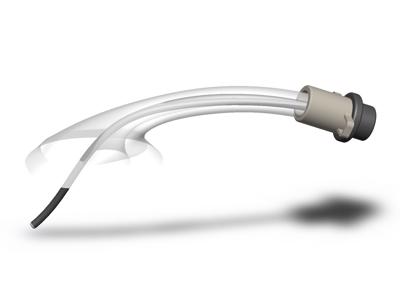In this project, we aim to design and develop a supraglottic device for blind endotracheal intubation that is affordable, effective and easy to use by healthcare personnel. Our device will requires minimal training for successful and safe intubation.
An endotracheal intubation procedure for airway management, entails the insertion, by an appropriately qualified healthcare professional, of a tube through the mouth down into the trachea (airway from the mouth to the lungs) in order to secure an unobstructed conduit into a patient's airway. In surgery, intubation is follows after general anesthesia to assist with airflow and ventilation of the lungs and to protect the airway from obstruction, where the patient is unable to maintain the necessary respiratory function. The device can also be used in emergency cases to give cardiopulmonary resuscitation - CPR.
Our device has two modes of operation; in the first mode, only the flexible curved tube is inserted into the patient and a face mask or anesthesia machine is used for ventilation. In the second mode, a thinner endotracheal tube is passed through the device to gain more proximity to the bronchi and hence deliver more controlled ventilation.
Ideally, intubation is carried out in the operating room, but in emergency situations, this may take place in emergency rooms, clinics or in the field. While successful intubation may be lifesaving, unsuccessful intubation can be life-threatening.
Depending on the cause, unsuccessful intubation may result in:
- brain damage, cardiac arrest and death due to inadequate respirations
- pneumonia and acute respiratory distress syndrome (ARDS) due to aspiration of stomach contents
- Collapsing of the lung (pneumothorax) due to insertion of the tube too deep and only one lung being ventilated
- damage to the teeth, the soft tissues in the back of the throat, and the vocal cords during endotracheal tube insertion
